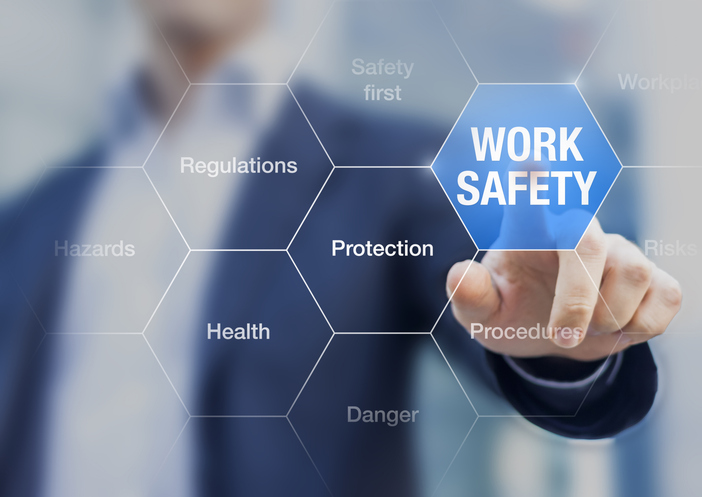Crucial Guidelines for California Workplace Violence Prevention: A Comprehensive Technique
Crucial Guidelines for California Workplace Violence Prevention: A Comprehensive Technique
Blog Article
The Role of Employee Training and Understanding in Enhancing Office Physical Violence Prevention Initiatives Throughout Various Industries
The assimilation of worker training and awareness right into workplace physical violence prevention initiatives is significantly identified as an essential element of business safety throughout diverse industries. Understanding these subtleties might expose methods that can dramatically boost security protocols and employee self-confidence in high-risk atmospheres.
Importance of Training Programs
In today's dynamic work setting, the value of training programs can not be overstated, particularly in the context of workplace physical violence avoidance. These programs offer as a foundational aspect in cultivating a safe and secure office society. By outfitting staff members with the knowledge and skills necessary to determine, alleviate, and react to possible risks, companies can foster an environment that prioritizes security and well-being.
Reliable training programs do even more than simply instruct; they encourage staff members to identify indication of physical violence, comprehend the procedures for reporting incidents, and establish techniques to de-escalate possible conflicts. Furthermore, they instill a sense of cumulative duty amongst staff, encouraging proactive participation in maintaining a safe work environment.
Investment in training not just improves staff member understanding however likewise shows an organization's commitment to safeguarding its labor force. This aggressive strategy can bring about reduced occurrences of office physical violence, lower absenteeism, and improved staff member morale. Inevitably, comprehensive training programs are essential to establishing a durable business society that values safety and security and promotes a healthy and balanced workplace, therefore minimizing the threat of violence and its linked consequences.
Key Elements of Effective Understanding
A thorough recognition program incorporates numerous essential components that are crucial for efficiently preventing office violence. Clear interaction of treatments and policies connected to work environment violence is crucial. Employees must be notified about the company's position on violence and the particular procedures in position for reporting events.
Second, training sessions must include reasonable circumstances that staff members might run into. This functional strategy aids staff members acknowledge advising signs of potential violence and furnishes them with the necessary skills to de-escalate strained situations. Third, fostering a helpful work environment society is important; staff members should feel empowered to speak up without anxiety of revenge.
In addition, continuous education is essential to maintain recognition fresh and pertinent. Regular correspondence course and updates on emerging dangers can enhance staff members' watchfulness and readiness. Finally, integrating responses devices enables staff members to share their insights and experiences, which can bring about continual improvement of understanding initiatives. By integrating these parts, organizations can produce a durable structure for stopping office violence, inevitably adding to a much safer and more efficient environment for all employees.
Industry-Specific Training Methods
Reliable office violence avoidance training need to be tailored to the special difficulties and threats faced by details markets. Medical care environments call for training that resolves the high probability of experiences with aggressive patients or visitors. Programs need to concentrate on de-escalation strategies, acknowledging indication of possible violence, and making certain personnel recognize the significance of reporting cases.
On the other hand, retail setups may face different threats, such as break-in or consumer disagreements. Training in these environments must emphasize situational awareness, feedback protocols during emergency situations, and the importance of securing cash money and belongings.
Manufacturing and construction sectors present their own risks, usually associated with interpersonal conflicts or unsafe working problems. Training in these industries ought to consist of approaches for conflict resolution, advertising a culture of security, and urging open interaction among employees.
Moreover, business workplaces might require training centered on from this source stopping harassment and bullying, cultivating a respectful workplace culture, and carrying out clear coverage mechanisms. Each industry should not only acknowledge its specific susceptabilities yet additionally adapt training products to reverberate with the labor force effectively, ensuring that staff members feel equipped and equipped to manage potential terrible circumstances.
Determining Educating Effectiveness
Evaluating the influence of office violence avoidance training is vital for making certain that employees are properly prepared to handle prospective threats. To properly determine training performance, organizations should carry out both qualitative and quantitative assessment methods. Pre- and post-training studies can assess modifications in staff member knowledge, attitudes, and behaviors worrying workplace violence. These studies should focus on particular training purposes to ensure placement with the company's goals.
In addition, sensible evaluations, such as role-playing circumstances or simulations, can give insights into just how well staff members use learned abilities in real-life circumstances. Keeping track of incident reports prior to and after training can additionally offer as a sign of efficiency, as a reduction in cases may show better staff member readiness.
Additionally, comments from individuals should be systematically collected to determine locations for improvement in training material and shipment. Carrying out follow-up evaluations at normal periods helps endure recognition and strengthens training principles with time - california workplace violence prevention. By employing a detailed approach to determining training performance, companies can ensure that their workplace physical violence prevention campaigns promote a more secure setting and enhance general worker health
Building a Culture of Security

Training plays an essential role in this cultural shift. Regular, comprehensive training sessions educate staff members about acknowledging caution indicators of office physical violence and the proper reactions. In addition, encouraging open interaction permits staff members to voice worries without worry of retribution, promoting collective duty for security.
In addition, incorporating safety and security into day-to-day procedures guarantees that it comes to be a shared worth instead of a click resources plain compliance issue. This consists of normal safety drills, updates on plans, and feedback systems that include employees in security conversations and enhancements.
Eventually, a durable culture of security not only minimizes the dangers of office physical violence but additionally boosts employee morale and performance. By fostering an environment where security is an essential concern, companies can develop resilient workplaces that support both private wellness and collective success.
Conclusion
In conclusion, employee training and awareness are vital parts in the prevention of office like this violence across numerous industries. Reliable training programs, customized to specific industry demands, enhance workers' capability to recognize and react to prospective dangers.

Routine, thorough training sessions enlighten staff members about identifying caution indications of office physical violence and the proper reactions.In final thought, employee training and awareness are essential parts in the prevention of workplace physical violence throughout different markets.
Report this page